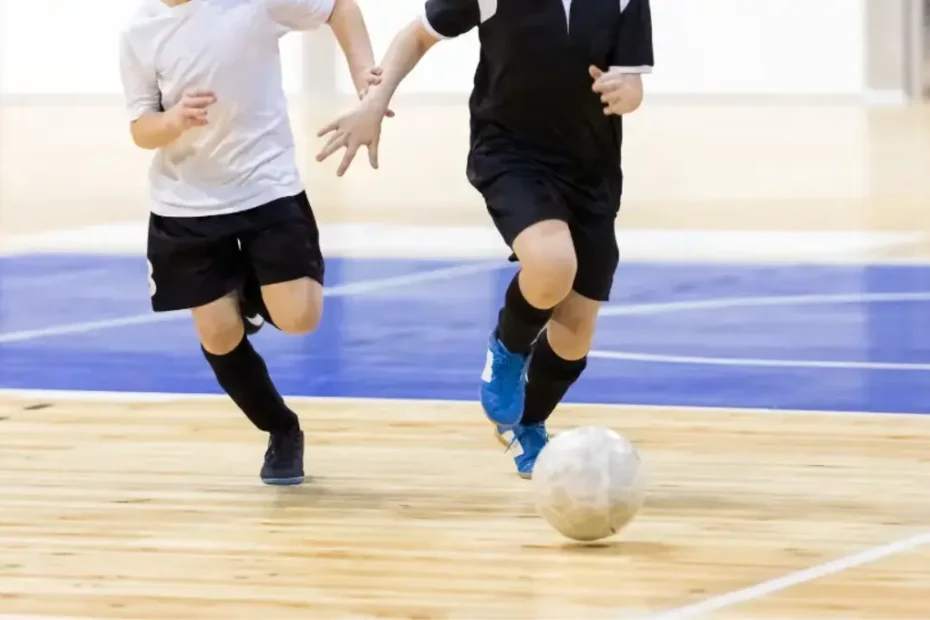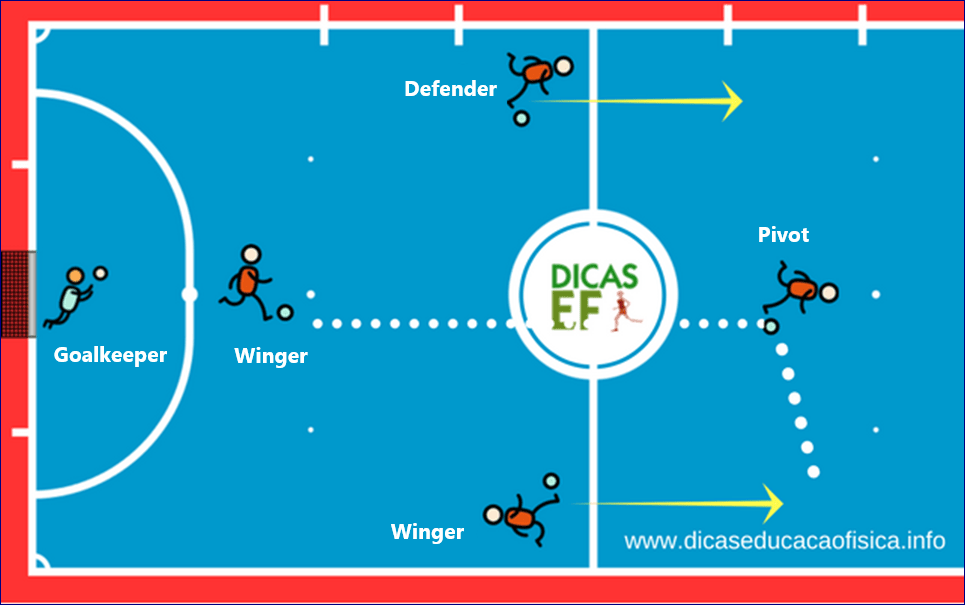What is the Futsal Rotation?
A Futsal Rotation is movements and exchanges of positions in an organized manner and must be part of Futsal Training, to create a movement pattern for a futsal team. In good futsal training, rotation is essential in developing a team.
What are the Goals of Futsal Rotation?
The goals of Futsal rotation are:
- create a movement pattern for the players when the team has possession of the ball;
- confuse the opposing team’s defense;
- cause errors in the opposing team’s defensive positioning;
- make room for the ball and players to infiltrate the opposing defense;
- create spaces for kicks to the goal.
Futsal Rotation Characteristics
The Futsal Rotation is a repetitive movement, carried out when the team has possession of the ball, executed from a tactical scheme defined by the team.
Rotation with 3 Players, on an 8-Shape Pattern, from Behind
The rotation with 3 players, on an 8-shape pattern is used in the Futsal 3×1 Tactical System, where the defender and the two wingers are positioned further back, to bring the ball from the defensive field to attack.
White dots = ball movement
Yellow arrow = player movement
-
1st movement: The defender receives the ball, pass it to the winger on the left side and move towards the left side of the field, behind of the winger.
-
2nd movement: The left winger receives the ball moving towards the center of the field, as showed below:
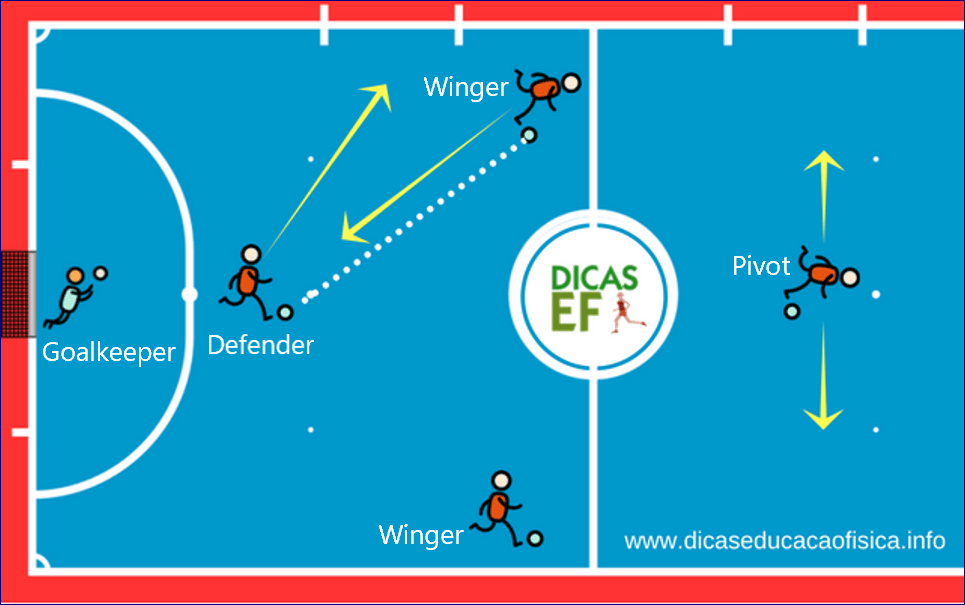
-
3rd movement: In the next picture, the winger is now in the center of the field, and passes the ball to the right-side winger, moving towards him.
-
4th movement: at same time, the right winger gets the ball, moving towards the center of the field e can give continuity to the rotation:
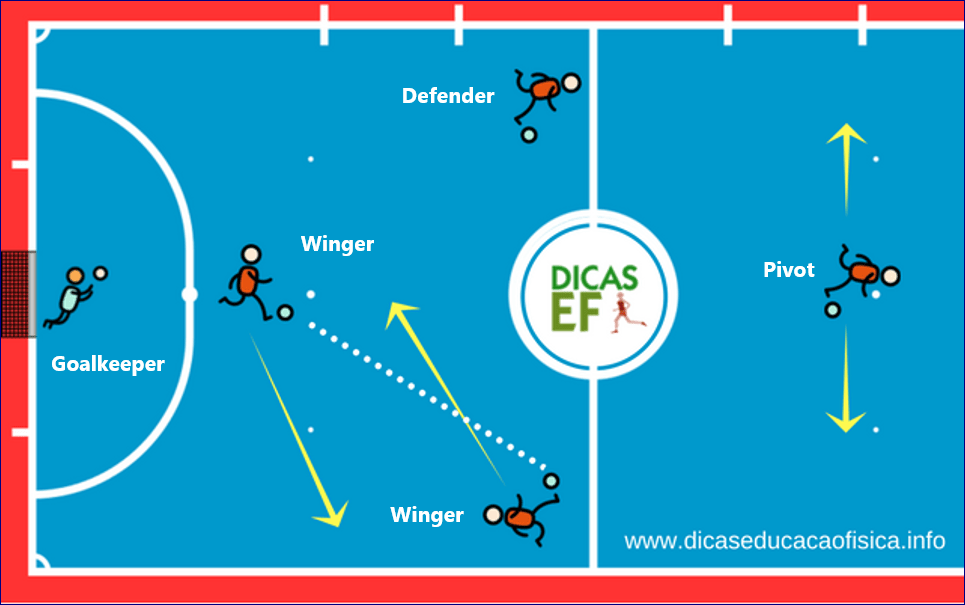
IMPORTANT! Did you notice that the Pivot is positioned and moving on the strike court? The player with the ball should always look at the movement of pivot and his teammates. If Pivot or another team player appears unmarked in a favorable position for an attacking or finishing move to goal, that move will take priority in the continuation of the rotation. See the example below:
Rotation With 4 Players: Winger Pattern
We will call this pattern, rotation by the winger, due to the movement of the players, in this type of rotation that always occupy the same wing (side of the court). This type of rotation is used in the Futsal 2×2 Offensive System. In the 2×2 system, there are two players positioned in defense (Winger and Defender) and two players positioned in the attacking court (Winger and Pivot).
See the example illustrated below:
-
1st movement: The defender receives the ball, passes it to the player positioned in the left wing and moves to the middle of the court and to the right wing in the attack court. At the same time, the player who occupied the right wing in the attack, retreats to occupy the defender position in the defensive court.
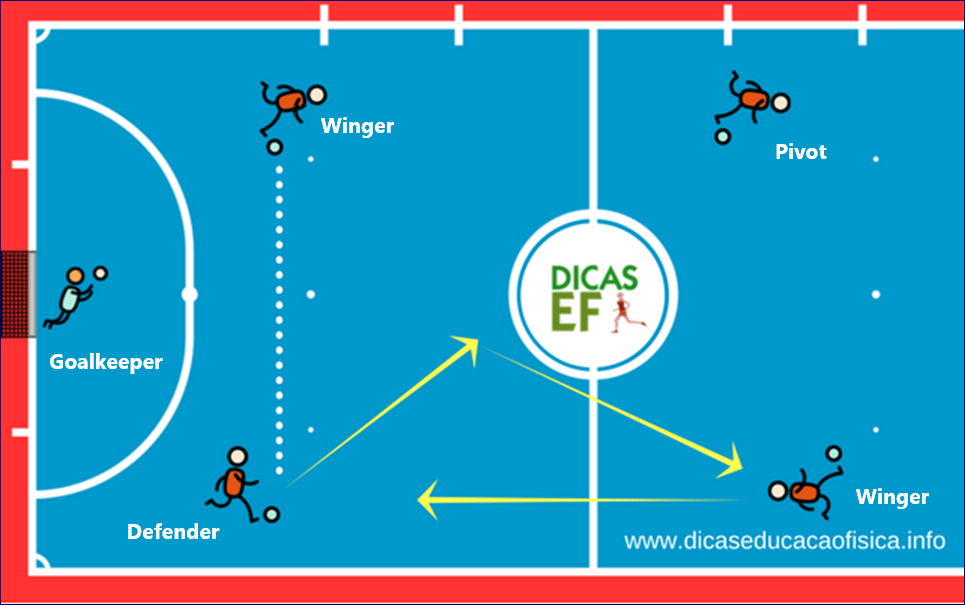
- 2nd movement: The winger on the left receives the ball, passes to the winger on the right and moves to the middle of the court and then to the left winger in the attack court. At the same time, the Pivot who was positioned in the attacking court, retreats to occupy the position of the left winger in the defense court.
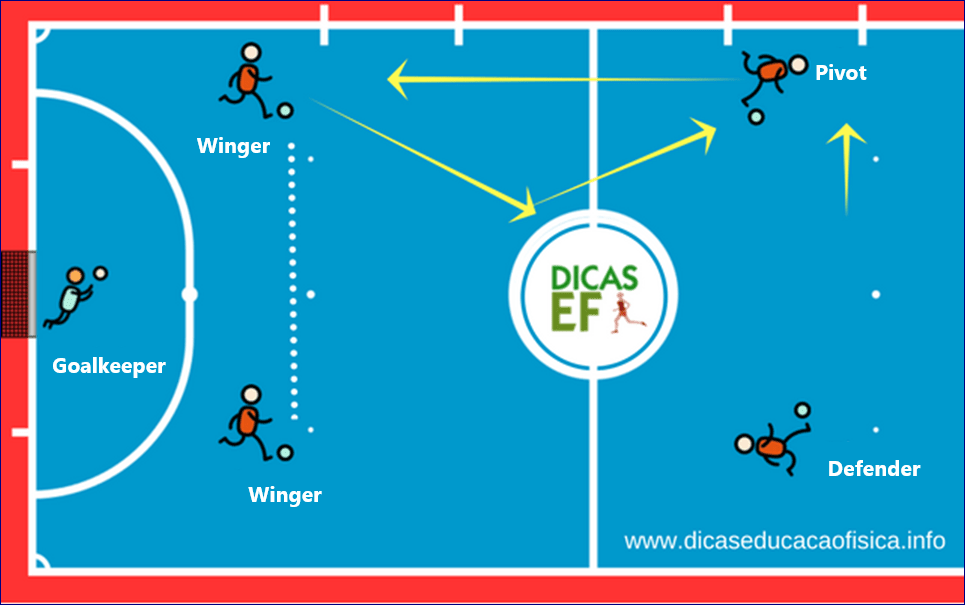
-
And so, the rotation always follows the same pattern as illustrated in the images above.
ATTENTION! It is always good to remember that the player who receives the ball must first look at the movement of his teammates. If a player of the team appears free, in a favorable position for an attack move, a pass, an assist or a goal finish, that move will have priority over the continuation of the rotation. See an example below:
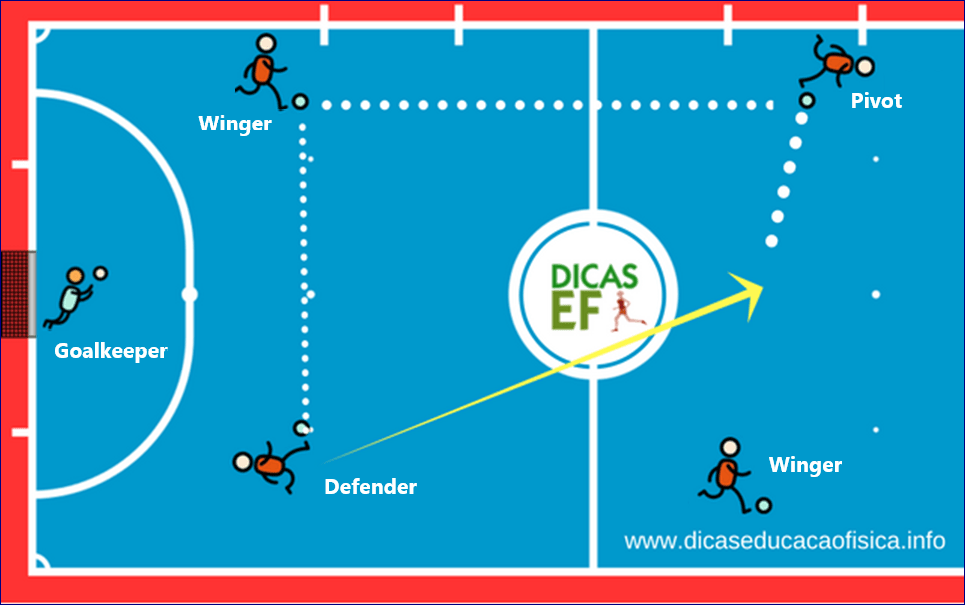
Rotation With 4 Players: Circle Pattern
This rotation system will be called the Circle Pattern. In this type of Futsal rotation, all players are constantly and intensely moving. This pattern of tactical movement requires athletes to have excellent physical and technical preparation for a good performance. See the example in the illustration below:
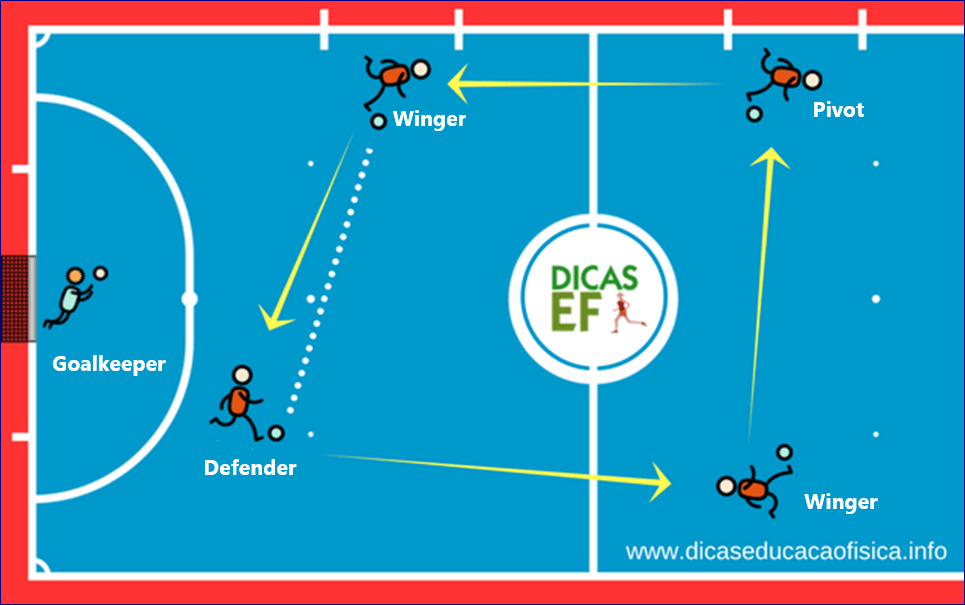
-
1st movement: The defender receives the ball in the right side of the defense court, passes the ball to the winger on the left side of the defense court and moves through the corridor (lateral) to occupy the right wing in the attack court.
-
-
At the same time, the player who occupied the right wing on the frontcourt will move to occupy the left wing on the frontcourt;
-
At the same time, the player who occupied the left wing on the frontcourt will retreat to occupy the left wing on the backcourt;
-
At the same time the player who occupied the left wing in the backcourt and who received the pass will move with the ball in the direction of the right wing of the backcourt.
-
-
-
After the complete rotation of the four players, the team would be positioned as in the image below and the rotation would begin again.
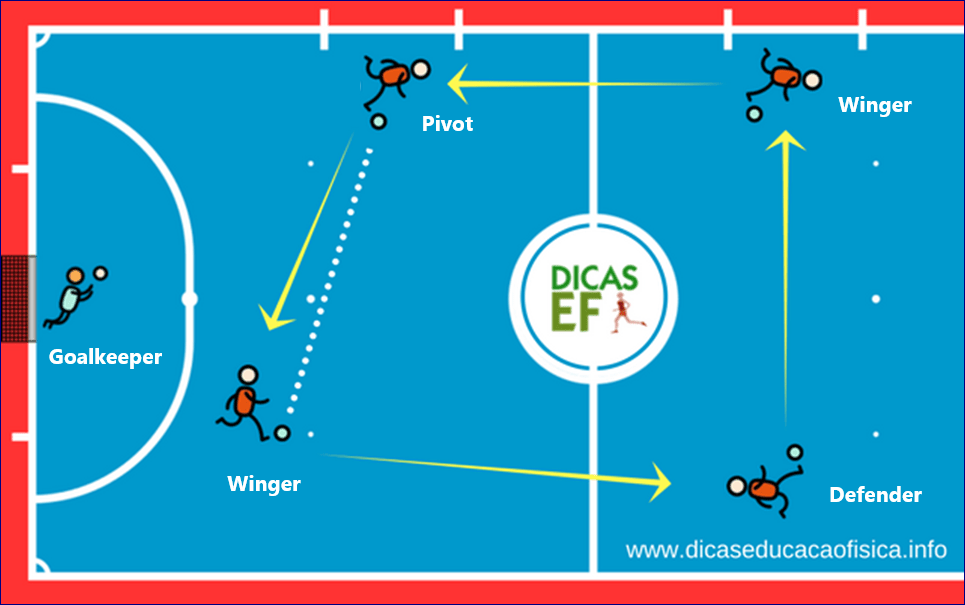
Did you notice the constant and simultaneous movement of the 4 players from the first pass? But don’t forget! The priority of this movement is not the rotation itself, but to open space in the opponent’s defense for an infiltration, pass or offensive assistance, in order to make a goal.
What is the best rotation form in Futsal?
How to know the best form of rotation for a Futsal team? The tip is simple: training and testing! Train and test all forms of rotation in Futsal, see which movement pattern your team adapts best. For example, it is no good if you like the circle pattern and your team does not adapt to it.
Players Characteristics and Rotation Pattern
There are some characteristics of the players of a Futsal team that can help to choose the rotation pattern of the team. For example: A team that has a strong pivot, with little movement, but that protects and holds the ball well and finishes well, must inevitably will use the Standard Eight pattern, as it is the most suitable standard to play with a pivot with these characteristics.
There are other rotation patterns in Futsal, but basically, they are variations of these three types of rotation that we have shown above. If you want to know more about other types of rotation, leave a message in the comments area.
MORE FUTSAL CONTENT
- How To Play Futsal Very Well
- Futsal Goalkeeper Rules
- Futsal Offensive Systems
- Futsal Rules
- Futsal Defensive System
- How Lonk is a Futsal Match
- Video How To Play Futsal Very Well
